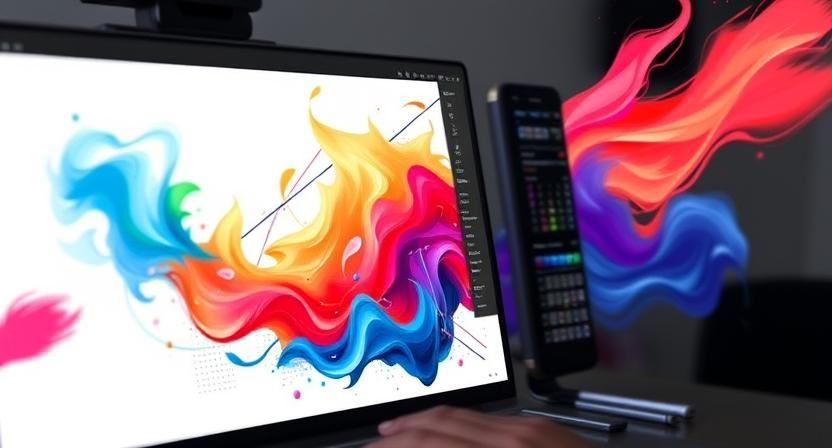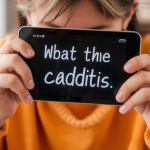The art world has undergone a significant transformation in the past few decades, with digital art emerging as a powerful and dynamic medium. As technology advances, artists have more tools at their disposal than ever before, allowing them to create stunning visuals with the click of a button. However, for beginners, stepping into the realm of digital art can be overwhelming. With so many software options, tools, and techniques, it’s easy to feel lost.
This guide will help you navigate the digital canvas, introducing essential tools and providing valuable tips to help you start your artistic journey with confidence.
Understanding Digital Art
Digital art is an umbrella term that encompasses various forms of artistic expression created using digital technology. Unlike traditional art, which relies on physical materials such as paint, paper, and brushes, digital art is created using electronic devices such as tablets, computers, and styluses. Digital art can be used for illustration, graphic design, animation, 3D modeling, and even game design.
Essential Tools for Digital Art
Before you dive into creating digital masterpieces, you’ll need the right tools. Here are some of the most essential tools to get started:
1. Digital Drawing Tablet
A digital drawing tablet is one of the most crucial tools for creating digital art. These tablets allow you to draw directly onto a screen or a touch-sensitive surface, mimicking the feeling of drawing on paper. Popular brands include:
- Wacom – Offers a variety of professional-grade tablets.
- Huion – A budget-friendly alternative with high-quality features.
- XP-Pen – Great for beginners looking for affordability without sacrificing functionality.
2. Stylus
A stylus is a pen-like tool used to draw on a tablet. Most modern styluses offer pressure sensitivity, tilt recognition, and customizable buttons for enhanced control.
3. Digital Art Software
Choosing the right software can make a significant difference in your creative process. Here are some of the best programs for beginners:
- Adobe Photoshop – The industry standard for digital painting and photo editing.
- Corel Painter – Known for its realistic brush strokes.
- Krita – A free, open-source software with professional-grade features.
- Procreate – A popular choice for iPad users due to its intuitive interface and powerful tools.
4. Computer or Tablet
A powerful computer or tablet is necessary to handle the software and processing power required for digital art. Some artists prefer high-performance computers with large screens, while others opt for portable devices like the iPad Pro or Microsoft Surface.
5. Color Calibration Tool
A color calibration tool ensures that the colors you see on your screen match printed or displayed colors accurately. This is crucial for professional artists who want consistency in their work.
Tips for Beginners in Digital Art
Starting in digital art can be both exciting and challenging. Here are some key tips to help you improve your skills and confidence:
1. Start with Basic Shapes
Every complex design starts with basic shapes. Practice drawing circles, squares, and other fundamental shapes to build a strong foundation for more detailed artwork.
2. Learn Layers and Brushes
Layers allow you to separate different elements of your artwork, making editing and adjustments easier. Experiment with different brushes to understand their effects and how they can enhance your work.
3. Master Keyboard Shortcuts
Keyboard shortcuts can significantly speed up your workflow. Learn shortcuts for essential tools like undo (Ctrl + Z), brush size adjustments, and layer management to save time and effort.
4. Use Reference Images
Using reference images is essential for accuracy, especially when drawing anatomy, lighting, or complex backgrounds. Websites like Unsplash and Pinterest provide a vast collection of reference images for free.
5. Experiment with Different Styles
Don’t limit yourself to a single art style. Experiment with different techniques, including realism, cartooning, and abstract art, to discover what resonates with you.
6. Understand Lighting and Shadows
Light and shadow play a vital role in making digital art look realistic. Practice shading techniques and observe how light interacts with objects in real life.
7. Take Breaks to Avoid Strain
Digital art can be time-consuming, leading to eye strain and fatigue. Take breaks every 30-60 minutes to rest your eyes and stretch your hands to avoid long-term discomfort.
8. Join Online Art Communities
Engaging with online art communities such as DeviantArt, ArtStation, and Reddit’s r/learnart can provide inspiration, constructive feedback, and valuable learning resources.
9. Watch Tutorials and Follow Courses
There are countless free and paid digital art tutorials on platforms like YouTube, Udemy, and Skillshare. Watching tutorials can help you learn new techniques and improve your skills faster.
10. Practice Regularly
Like any skill, digital art requires practice. Set aside time every day or week to draw, experiment, and refine your techniques.
Overcoming Common Challenges in Digital Art
Many beginners face obstacles when starting with digital art. Here’s how to tackle some common challenges:
1. Struggling with Line Work?
- Use the stabilizer tool in your software to smooth out shaky lines.
- Practice drawing long, continuous strokes instead of short, disconnected lines.
2. Finding It Hard to Blend Colors?
- Use a soft brush with low opacity for smoother transitions.
- Experiment with different blending modes to find what works best for your style.
3. Feeling Overwhelmed by Too Many Tools?
- Focus on mastering a few essential tools before exploring more advanced features.
- Customize your workspace to keep frequently used tools within easy reach.
Final Thoughts
Mastering the digital canvas is a journey that requires patience, practice, and creativity. With the right tools and techniques, you can transform your artistic vision into stunning digital masterpieces. Don’t be discouraged by initial challenges—keep experimenting, learning, and improving. Digital art is an ever-evolving field, and every artist’s journey is unique. So pick up your stylus, open your software, and start creating!







Leave a Reply